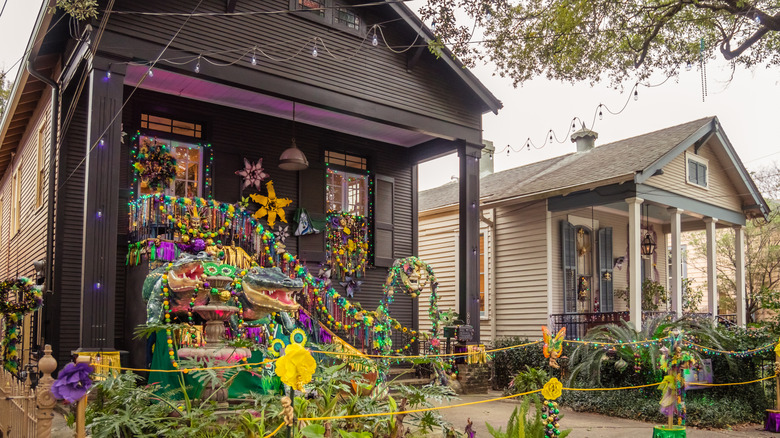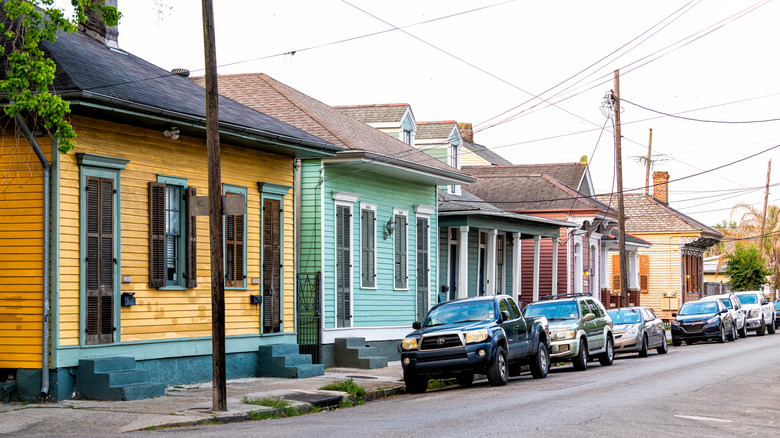What's A Shotgun House?
If you've ever stood at the front door of a narrow historic home and could see straight through to the backyard, you were probably about to enter a shotgun house. Although we wouldn't recommend it, the name emerged from the idea that you could fire a shotgun through the front door and the pellets would exit right out the back. First appearing in early 19th-century New Orleans, shotgun houses were born from a mixture of necessity and ingenuity. The city's narrow lots demanded efficiency, and the resulting homes were just one room wide and several rooms deep. Meanwhile, swampy weather was combated by their perfectly aligned doors that allowed air to freely flow from front to back, creating one of the earliest examples of passive cooling (an architectural adaptation which historians trace to West African, Haitian, and Caribbean influences). Shotgun houses were simple, practical, and easy to build, remaining an appealing and affordable option for renters and homeowners.
Unlike other historic home designs popularized during the same era, shotgun houses are an example of democratic architecture. Affordable, practical, and communal, each room opens directly into the next, keeping families close inside and neighbors nearby, out front. The boxy design meant builders could quickly line entire city blocks with them, often so densely that engaging with the greater community simply wasn't optional. As the efficient floor plans were combined with sprawling front porches, neighborhoods full of shotgun houses felt vibrant in every direction. Although some of the humble homes have suffered from neglect and modernization over the years, many of them are now entering a stylish new chapter.
Why a shotgun house fits today's modern lifestyles
If you're thinking about buying a historic house, shotgun houses should definitely be on your radar. Although they are narrow, these pint-sized homes often come with loads of curb appeal and character. Their crisp trim and colorful exteriors make shotgun houses stand out even in historic neighborhoods filled with show-stopping properties. Inside, you'll find that many have been renovated with updated kitchens, modern bathrooms, and energy-efficient systems thanks to preservation tax incentives and grants that make restorations more achievable for everyday families.
You may also find yourself attracted to the surprising practicality of the floor plans in shotgun houses. Yes, you'll need to get creative when it comes to designing for smaller spaces, but as trends move away from sprawling McMansions to cozier intentional living, shotgun houses may better meet the needs of contemporary homeowners. Their compact footprints are easier to maintain, more energy-efficient to heat and cool, and are often located in walkable neighborhoods close to downtown amenities like restaurants and shopping.
Another part of the appeal for many buyers is their affordability. Because they tend to be smaller both in terms of square footage and lot size, shotgun houses are often a less expensive way to move into desirable historic neighborhoods. They're also a smart investment, since homes with architectural significance tend to appreciate over time. Today, you won't just find them in New Orleans. Cities including Louisville, Houston, and Atlanta have all seen renewed interest in revitalizing working-class historic districts where shotgun houses abound. For many modern buyers, they are pieces of living history that fit today's lifestyles.

